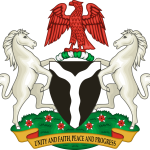BY DAPO ONANUGA
- Dapo Onanuga examines the path-breaking reworking of the health system in State of Osun
“THE truth is women use contraception not only to prevent unintended pregnancies, but also to improve their health and the health of their families. Increased access to contraception is directly linked to declines in maternal and infant mortality.” Felicity Huffman.
According to the International Conference on Population and Development (ICPD) (1994), “Reproductive health is a state of complete physical, mental and social well-being and not merely the absence of disease or infirmity, in all matters relating to the reproductive system and its processes”. In essence, people must be informed about their right to access safe, effective, affordable family planning of their choice, access to appropriate health-care services (Family Planning providers, Skilled Birth Attendants) that enable women to go safely through pregnancy and childbirth and provide couples with the best chance of having a healthy infant. One of such platforms is through the Antenatal Care (ANC) where the woman would be counselled on care of mother and unborn child, family planning, HIV counselling and testing, etc by a skilled attendant.
In Osun, the Ogbeni Rauf Aregbesola policy book, “My Pact with the People of Osun” on restoring healthy living emphasized the provision of effective health care systems that would take care of the vulnerable (mother, children and the elderly) as well as providing the right atmosphere for health workers to thrive in the area of upgrading, retraining and their welfare. The interventions which followed would be put into perspective while examining data from surveys conducted through the years. For the basis of this article, I shall focus on Skilled Birth attendants, Contraceptive Prevalence Rate, HIV Counseling and Testing (HCT) and Antenatal care.
Nigeria has one of the highest levels of maternal mortality in the world, accounting for 10 per cent of maternal deaths worldwide (UNICEF, 2008). The Multiple indicator Cluster Survey (2011) reports that three quarters of all maternal deaths occur during delivery and the immediate post-partum period. Therefore, the most crucial intervention for safe motherhood is to ensure a competent birth attendant with midwifery skills – namely a doctor, nurse or midwife – is present at every birth, and transport is available to a referral facility for obstetric care in case of emergency.
According to the NNHS report of 2018
“Skilled attendance at delivery is also one of the indicators used to track progress toward the Millennium Development Goal (MDG5) target of reducing the maternal mortality ratio (MMR) by three quarters between 1990 and 2015 and achieving universal access to reproductive health by 2015. According to WHO, UNICEF, UNFPA and the World Bank estimates, Nigeria has made some progress toward MDG5, albeit too slow: in 2010, maternal mortality rate in Nigeria was estimated to be approximately 576 deaths/100,000 live births”.
The Aregbesola’s administration embarked on a major recruitment drive in the health sector in 2012 which resulted in the high skilled birth attendant in the State as illustrated in Figure 1. The percentage of skilled attendants in the health sector in Osun outnumbers that of the South West average and the national average. According to NNHS 2018 findings, the skilled birth attendants in the State of Osun is put at 92% which indicates a progression from 83.9% and 85.6% for 2014 and 2015 respectively. The ability of the state government to retain most of the health workers as of the time despite the plummeting allocations from the Federal Government was seen as novel and commendable.
The contraceptive prevalence rate (CPR) is usually defined as the percentage of married women or in a union who are currently using a method of contraception. This indicator shows the success of family planning programmes.
The NNHS posited that contraceptive prevalence rates have a strong correlation with maternal mortality and can be used to estimate reductions in total fertility rates. While there is need for improvement generally in the high fertility rates recorded in Nigeria, the State of Osun recorded a steady progress most especially by 11.3% which is commendable and represents a milestone in approaching the 50% mark. The activities of Maristopes (a development partner) who supplied Family planning commodities as well as training of staff complemented government efforts by increasing FP service point offerings in the State.
A UNAIDS report in 2010 estimated that 230,000 pregnant women and 360,000 children were living with HIV in Nigeria, and more than 90 percent of children new infections occurred through mother to child transmission (MTCT).
It was estimated that only 5 per cent of ANC facilities in Nigeria offered MTCT services, while HIV testing among pregnant women was as low as 14 percent. (UNICEF and WHO report, 2010). Osun has had its own fair share of facilities not having testing kits and other consumables which had contributed to the low percentages recorded. Despite the efforts of state government agencies such asOsun State Agency for the Control of AIDS, (OSACA)and other interventions by the state government like provision of rapid kits and consumables, the state was able to record a 9.1% increment from MICS 2015/2016 and the NNHS 2018 survey.
Antenatal care is expected to provide timely interventions and information to mothers and families about the danger signs and symptoms during pregnancy, the risks of labour and delivery without the assistance of a skilled health care provider, the importance of birth spacing, tetanus immunization, syphilis screening and treatment, prevention and treatment of malaria and management of anemia.
More recently, the potential of the antenatal period as an entry point for HIV prevention and care – for the prevention of HIV transmission from mother to child which has led to renewed interest in access to and use of antenatal services.
The World Health Organization recommends a minimum of four antenatal care visits during pregnancy to ensure the well-being of mothers and new-born. At these visits, women should receive at least a basic care package, including nutritional advice. They should also be alerted to warning signs indicating possible problems during their pregnancy and get support in planning a safe delivery.
The State of Osun had over the years performed well in the area of mothers seeking Antenatal Care services. According to the NNHS 2015, MICS 2016/17 and NNHS 2018 survey, over 90% had visited the antenatal at least once. This was as a result of massive behavioral change campaign, weekly radio programmes and other interventions instituted by the state government like the supply of mama kit for pregnant mothers.
Policy wise, the passing of the Primary Health care Board bill and the establishment of the Osun Health Insurance Scheme brought organization in the administration of these interventions. This decentralized system was very effective in making health accessible and affordable most especially for the vulnerable.











